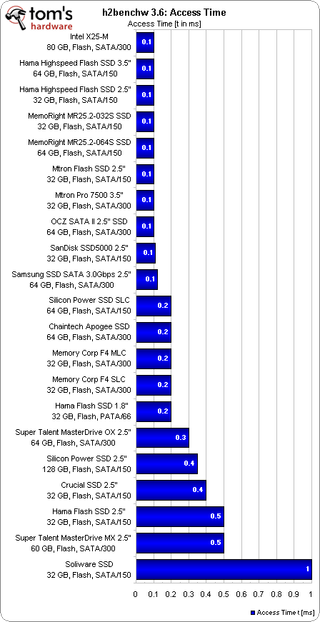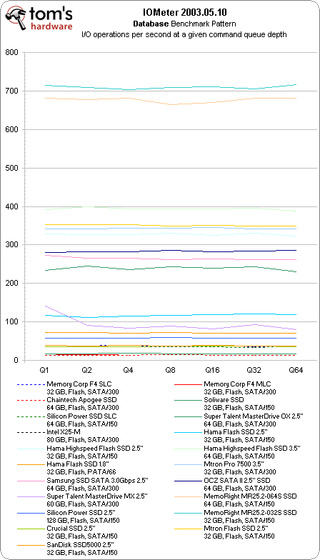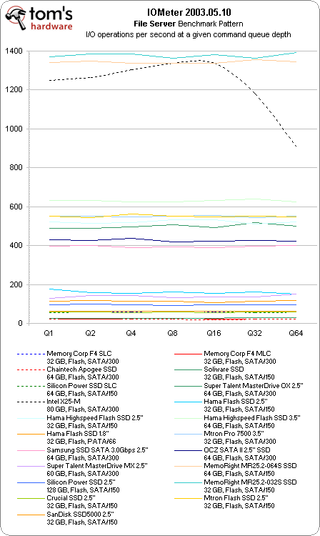Six New SSDs: Can Intel Be Dethroned?
Access Time, I/O Performance
Access time isn’t really an issue, as all flash SSDs access data in a fraction of the time needed by a conventional hard drive.

However, access time refers to locating and accessing a single piece of data. The following I/O benchmarks are based on random and sequential I/O operations, and they include small and large block sizes, depending on the individual profile used.
Databases usually read and write a lot, and they typically move very small chunks of data. Most of the flash SSDs are limited to less than 100 I/O operations per second, which can typically be matched by mechanical hard drives.

File servers work with much larger files, and there are clearly more reads than writes. This is favorable for many flash SSDs, which are quickest when they have to read large amounts of data.

Web servers are dominated by read access, and by small amounts of data. In this benchmark, any flash SSD does much better than a regular hard drive.

The workstation I/O benchmark pattern is tough, as it includes small and medium block sizes, and reads as well as writes.

Stay on the Cutting Edge
Join the experts who read Tom's Hardware for the inside track on enthusiast PC tech news — and have for over 25 years. We'll send breaking news and in-depth reviews of CPUs, GPUs, AI, maker hardware and more straight to your inbox.
Current page: Access Time, I/O Performance
Prev Page Throughput, Interface Performance Next Page Application Performance, Power ConsumptionMost Popular

